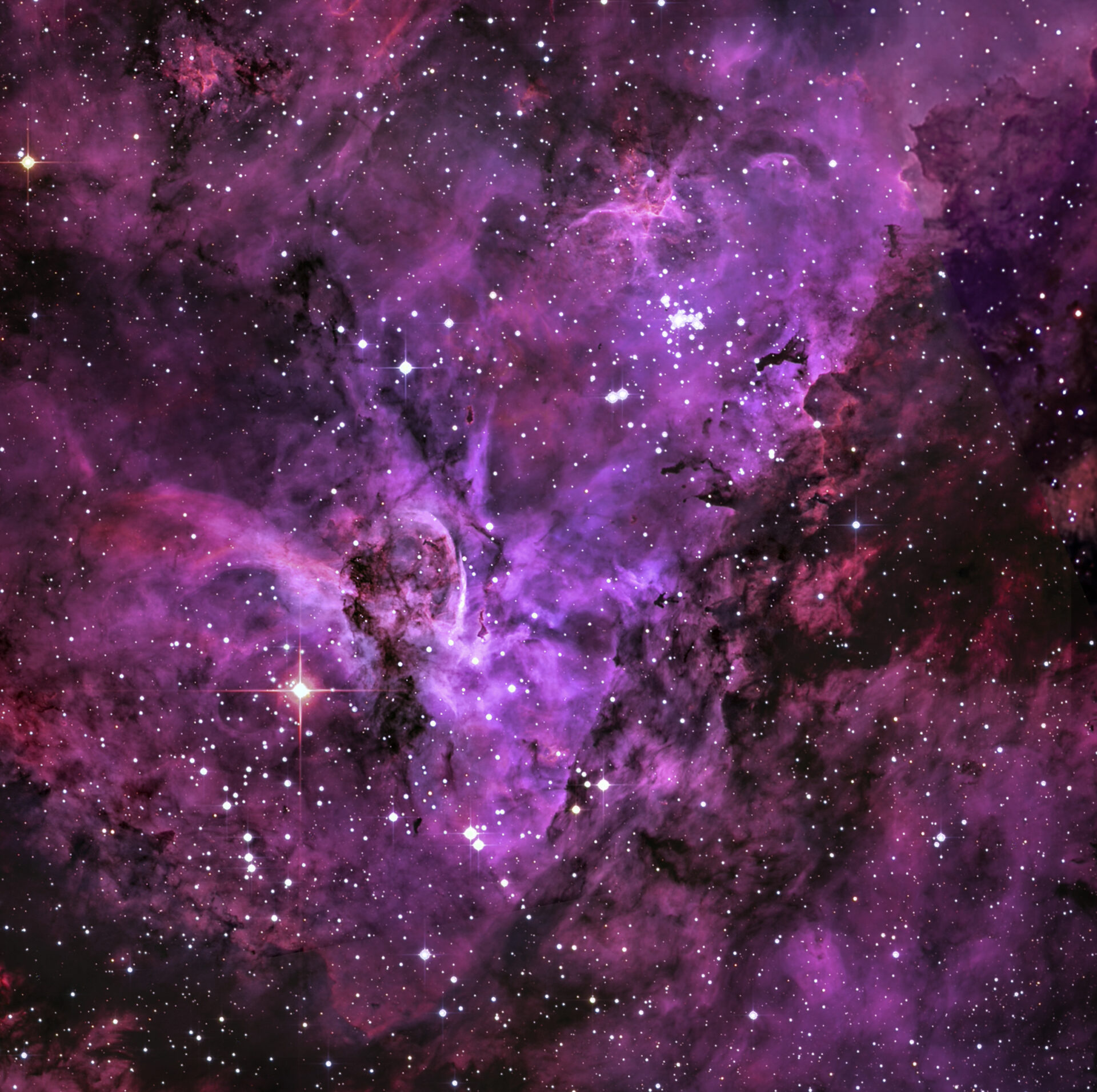Optics: Planewave 17″ CDK17 & Astro Physics RH305
Mount: Software Bisque Paramount ME
Camera: SBIG STXL 11002 & 16200
Filters: Astrodon 3nm Ha, Oiii, Siii, L,R,G,B
Dates/Times: Feb 2020, Jan 2018
Location: Rio Hurtado, El Sauce, Chile, & New South Wales Australia, Martin Pugh Observatory
Exposure Details: CDK17, L,R,G,B=8x15min, Ha,Sii,Oiii=14x15min, total 98 images, RH305,R,G,B =6x20min, Ha=14x15min,23 hours, 30 min
Acquisition: MaxIm DL
Processing: MaxIm DL, Photoshop CC2020, This image comes mostly from the CDK17 but some of the area on the upper right side is from the RH305 It maintains the color integrity of the LRGB image but adds detail from the narrowband imaging. The color has been calibrated using Pixinsight Photometric Color Calibration.
Keyhole Nebula, NGC 3372
Original price was: $65.00.$52.50Current price is: $52.50.
The Carina Nebula, NGC 3372 A jewel of the southern sky, the Great Carina Nebula, also known as NGC 3372, spans over 300 light-years, one of our galaxy’s largest star forming regions. Like the smaller, more northerly the Great Orion Nebula, the Carina Nebula is easily visible to the unaided eye, though at a distance of 7,500 light-years it is some 5 times farther away. The Carina Nebula is home to young, extremely massive stars, including the still enigmatic and violently variable Eta Carinae, a star system with well over 100 times the mass of the Sun. The Eta Carina is is the bright star in the lower third of the image. While Eta Carinae is likely on the verge of a supernova explosion, X-ray images indicate that the Great Carina Nebula has been a veritable supernova factory. The main feature of this image is the Keyhole, or Keyhole Nebula, a small dark cloud of cold molecules and dust within the Carina Nebula, containing bright filaments of hot, fluorescing gas, silhouetted against the much brighter background nebula. The diameter of the Keyhole structure is approximately seven light-years . Its appearance has changed significantly since it was first observed, possibly due to changes in the ionizing radiation from Eta Carinae. The overall field of view here is about one moon diameter. The image was mainly done with the 17″ Planewave telescope but some of the upper right was done with the Astro Physics RH305. The image can be zoomed in to see further detail in this region. Another image next to this one in the Nebulae group shows the entire Carina nebula. The image is a combination of a true color image and a narrowband image to enhance the detail. The color has been star calibrated.


